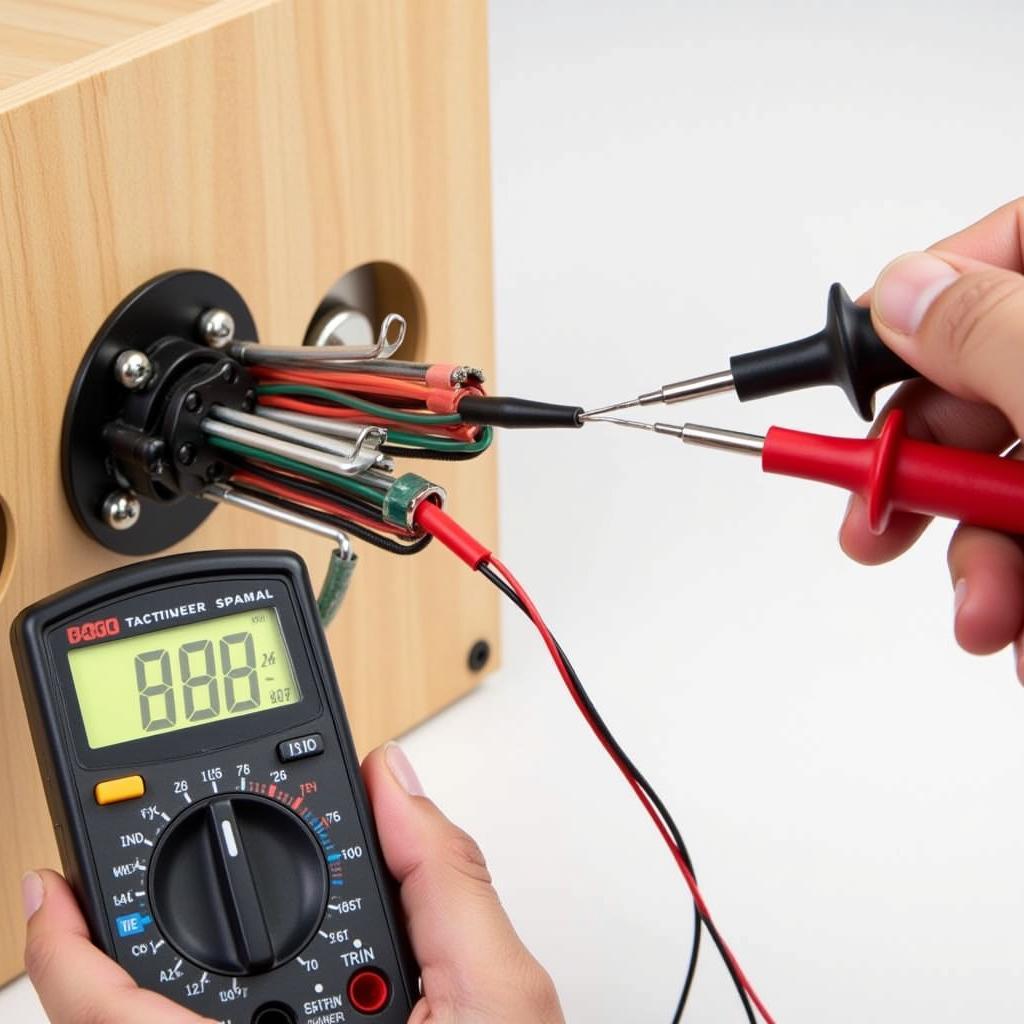Understanding speaker wire polarity is crucial for optimal audio performance. Getting the positive and negative connections right ensures that your speakers work in phase, delivering a clear and balanced sound. But what color speaker wire is positive, and how can you identify it correctly?
Decoding Speaker Wire Colors
Speaker wire typically comes in pairs, with each wire having a different marking to distinguish positive from negative. The most common method is color-coding. While there isn’t a universally mandated standard, some conventions are widely followed. Often, the positive wire is marked with a stripe, a ridge, or a different color.
Common Color Codes for Positive Speaker Wire
- Copper/Silver: In many cases, the positive wire is copper-colored while the negative is silver.
- Red/Black: Red often indicates the positive terminal, and black represents the negative. This is particularly common in automotive applications.
- White Stripe/Plain: Another common marking is a white or other colored stripe on the positive wire, while the negative wire remains plain.
What if the Wires Are the Same Color?
Sometimes, both wires might appear to be the same color, making identification tricky. In such situations, you can use a few methods to determine polarity:
- Ridge/Groove: Feel the wire carefully. One wire might have a slight ridge or groove running along its length. This textured wire is typically the positive one.
- Text/Marking: Examine the wire closely for printed text or markings. These can often indicate the positive terminal.
Why Correct Polarity Matters
Connecting your speaker wires with the correct polarity is essential for several reasons:
- Sound Quality: Proper polarity ensures that your speakers work in phase. This means that the speaker cones move in sync, producing a richer, fuller sound. Incorrect polarity can lead to phase cancellation, resulting in a thin, weak sound with diminished bass response.
- Bass Response: Bass frequencies are particularly susceptible to phase cancellation. When speakers are out of phase, the bass waves can cancel each other out, resulting in a noticeable lack of low-end punch.
- Stereo Imaging: Correct polarity is crucial for accurate stereo imaging. When the speakers are wired correctly, the soundstage is more precise and defined, creating a more immersive listening experience.
Testing Speaker Wire Polarity
Even if you’ve identified the positive wire, it’s always a good idea to test the polarity. Here are a couple of methods:
- Battery Test: Briefly connect a 1.5V AA battery to the speaker terminals. Observe the speaker cone. If the cone moves outwards, the positive terminal of the battery is connected to the positive terminal of the speaker.
- Multimeter Test: Use a multimeter set to continuity mode. Touch one probe to the positive terminal of the speaker and the other to the positive wire. If the multimeter beeps, the connection is correct.
 Testing Speaker Wire Polarity with a Multimeter
Testing Speaker Wire Polarity with a Multimeter
Tips for Managing Speaker Wires
- Label Your Wires: Once you’ve identified the positive and negative wires, label them clearly using colored tape or markers. This will save you time and prevent mistakes in the future.
- Use High-Quality Wire: Invest in good quality speaker wire to ensure optimal signal transfer and minimize signal loss.
- Keep Wires Neat: Organize your speaker wires neatly to avoid tangles and ensure proper connections.
Conclusion
Knowing what color speaker wire is positive is fundamental for achieving the best possible sound from your audio system. While color codes can vary, understanding the common conventions and alternative identification methods ensures correct polarity. By paying attention to these details, you can enjoy a richer, fuller, and more immersive listening experience. Remember, correct speaker wire polarity is a small detail that makes a big difference.
FAQ
- Does speaker wire polarity really matter? Yes, it significantly impacts sound quality, especially bass response and stereo imaging.
- What happens if I reverse the speaker wire polarity? You might experience weaker bass and a less defined soundstage.
- Are all speaker wires color-coded? Not all, some might require you to check for ridges or markings.
- Can I use any color wire for positive and negative? Yes, as long as you consistently maintain the polarity throughout your setup.
- What is the best way to test speaker wire polarity? Using a multimeter is the most reliable method.
- Is there a standard color code for speaker wire? While some conventions are common, there isn’t a universal standard.
- How can I tell the positive speaker wire if both are the same color? Look for a ridge or groove on one of the wires, or check for printed markings.
Situations where speaker wire polarity questions arise:
- Setting up a new home theater system.
- Connecting speakers to a car stereo.
- Troubleshooting audio issues.
- Replacing old speaker wire.
Related articles and further reading:
- Understanding Speaker Impedance
- Choosing the Right Speaker Wire Gauge
- How to Connect a Subwoofer
Need assistance with your audio setup? Contact us at Phone: 0373298888, Email: [email protected] or visit us at 86 Cau Giay, Hanoi. We have a 24/7 customer support team ready to help.

